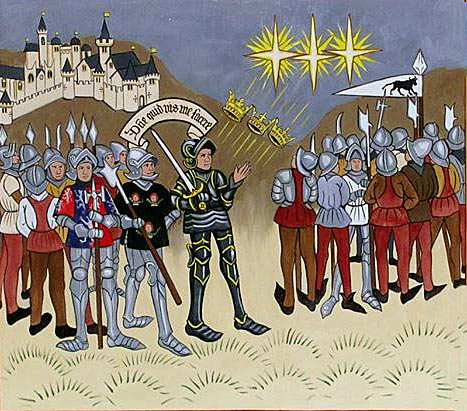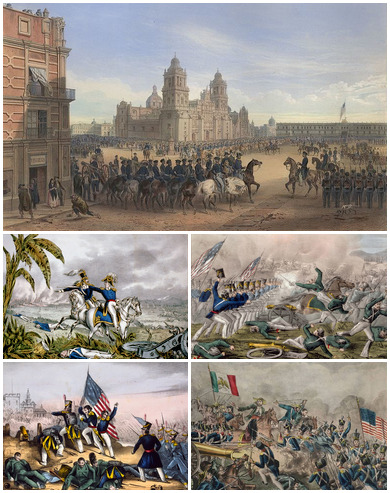February 2nd stands as a beacon through the annals of history, illuminating a day marked by pivotal moments that have indelibly shaped the course of human civilization.
From the crowning of emperors and the signing of treaties to groundbreaking political reforms and dramatic shifts in power, this date reflects the complexity and dynamism of the human story.
Through a detailed exploration of events ranging from the coronation of Holy Roman Emperor Otto I in 962 to the significant environmental stride made with the Kyoto Protocol’s coming into force in 2005, we uncover the threads of innovation, conflict, discovery, and change that are woven into the fabric of February 2nd.
February 2nd Events in History
962 – Otto I, later known as Otto the Great, is crowned Holy Roman Emperor by Pope John XII in Rome
Otto I, also known as Otto the Great, was crowned Holy Roman Emperor by Pope John XII on February 2, 962. This coronation marked a significant moment in European history, symbolizing the close relationship between the Church and the state.
Also Read: February 1 – On this Day in History
Otto’s reign was instrumental in consolidating and expanding the Holy Roman Empire, which encompassed much of Central Europe. His coronation is often considered a foundational event for the Holy Roman Empire, which would continue to play a central role in European affairs for many centuries.
1461 – The Battle of Mortimer’s Cross took place in England as part of the Wars of the Roses
The Battle of Mortimer’s Cross took place on February 2, 1461, in Herefordshire, England. This conflict was a part of the Wars of the Roses, a series of civil wars fought over the throne of England between the houses of Lancaster and York.
Also Read: February 3rd Events in History
The battle was a significant victory for the Yorkists, led by Edward, Earl of March (who would later become King Edward IV), against the Lancastrians. The victory at Mortimer’s Cross helped to pave the way for Edward’s ascension to the throne and was crucial in the Yorkist struggle for control of England.

1536 – The Spanish navigator Pedro de Mendoza founds Buenos Aires, Argentina
On February 2, 1536, Spanish navigator Pedro de Mendoza founded Buenos Aires, Argentina. Mendoza was sent by the Spanish crown to establish a settlement in the region, and Buenos Aires was initially named Nuestra Señora Santa María del Buen Aire (Our Lady Saint Mary of the Good Air).
The early years of Buenos Aires were marked by difficulties, including conflicts with indigenous peoples and a lack of resources, leading to the temporary abandonment of the settlement.
However, Buenos Aires would eventually grow to become one of the most significant cities in South America, serving as Argentina’s capital.
1653 – New Amsterdam (later renamed New York City) is incorporated
New Amsterdam, later renamed New York City, was officially incorporated on February 2, 1653. The settlement, originally established by the Dutch West India Company in 1624, served as the capital of the Dutch colony of New Netherland.
The incorporation of New Amsterdam laid the groundwork for the city’s administrative structure and governance. In 1664, the city was captured by the English and renamed New York, after the Duke of York. New York City would go on to become a major global center for commerce, finance, culture, and diplomacy.
1709 – British sailor Alexander Selkirk is rescued after being marooned on a desert island for 5 years, inspiring the book “Robinson Crusoe” by Daniel Defoe
British sailor Alexander Selkirk was rescued on February 2, 1709, after being marooned for more than four years on the uninhabited island of Más a Tierra, in the Juan Fernández Archipelago off the Chilean coast. Selkirk had been stranded there in 1704 after a dispute with the captain of his ship, the Cinque Ports.
His experiences of survival in isolation are believed to have inspired Daniel Defoe’s novel “Robinson Crusoe.” Selkirk’s ordeal and eventual rescue highlight the dangers of maritime exploration and the human capacity for survival under extreme conditions.
1848 – The Treaty of Guadalupe Hidalgo is signed, ending the Mexican-American War and ceding vast territories from Mexico to the U.S
Signed on February 2, 1848, the Treaty of Guadalupe Hidalgo marked the end of the Mexican-American War. This pivotal treaty required Mexico to cede an enormous portion of its territory to the United States, including what are now the states of California, Nevada, Utah, Arizona, Colorado, Wyoming, and New Mexico.
In return, the U.S. agreed to pay Mexico $15 million and assumed $3.25 million in debt owed by Mexico to American citizens. The treaty significantly expanded U.S. territory and had profound implications for the relationship between the two countries, as well as for the Native American peoples and Mexicans living in the ceded territories.

1876 – The National League of Professional Baseball Clubs of Major League Baseball is formed
On February 2, 1876, the National League of Professional Baseball Clubs, known today as the National League (NL), was formed. It was the first major league in professional baseball in the United States and remains the oldest extant major professional sports league in the U.S.
The formation of the NL marked a significant step in the organization and professionalization of baseball, setting standards for rules, schedules, and player contracts.
The original league consisted of eight teams from various cities, including Boston, Chicago, Cincinnati, and New York, laying the foundation for the modern Major League Baseball (MLB) structure.
1887 – In Punxsutawney, Pennsylvania, the first Groundhog Day is observed
The first observance of Groundhog Day took place in Punxsutawney, Pennsylvania, on February 2, 1887. The tradition was brought by German immigrants, who believed that if a groundhog emerging from its burrow on this day saw its shadow due to clear weather, it would retreat back into its den, signifying six more weeks of winter; no shadow meant an early spring.
The event centered around a specific groundhog, Punxsutawney Phil, has grown into a popular American and Canadian tradition, celebrated with festivities in Punxsutawney and observed in various forms in other parts of both countries.
1899 – The Australian Premiers’ Conference held in Melbourne decides to locate Australia’s capital city, Canberra, between Sydney and Melbourne
During the Australian Premiers’ Conference held in Melbourne on February 2, 1899, it was decided that Australia’s capital city would be located between Sydney and Melbourne, the two largest cities in the country.
This decision was part of the negotiations leading up to the federation of Australia, as both cities were rivals for the honor of becoming the capital. The compromise led to the establishment of Canberra as the capital. Canberra was selected as a purpose-built, planned city.
The location was chosen for its strategic position, equidistant from both Sydney and Melbourne, and for its potential for development.
1922 – James Joyce’s “Ulysses” is published in Paris on his 40th birthday by Sylvia Beach’s bookstore, Shakespeare and Company
James Joyce’s “Ulysses” was published in Paris on his 40th birthday, February 2, 1922, by Sylvia Beach, the owner of the bookstore Shakespeare and Company.
The novel is renowned for its innovative use of stream of consciousness, a narrative mode that seeks to capture the flow of thoughts and feelings running through the mind. “Ulysses” is set in Dublin on a single day, June 16, 1904, and follows the life and thoughts of its central character, Leopold Bloom, along with a host of other characters.
The publication of “Ulysses” was a landmark event in the history of modern literature, celebrated for its deep exploration of life and consciousness, despite facing initial censorship and legal battles in the English-speaking world due to its explicit content.

1925 – Serum run to Nome: Dog sleds reach Nome, Alaska with diphtheria serum, inspiring the Iditarod race
The Serum Run to Nome, also known as the “Great Race of Mercy,” took place in January and February 1925. A diphtheria epidemic threatened the remote city of Nome, Alaska, and the only way to deliver the life-saving antitoxin was through a relay of dog sled teams across the harsh winter landscape.
The serum was transported nearly 700 miles from Nenana to Nome, overcoming extreme temperatures and blizzard conditions. The last leg of the relay was led by musher Gunnar Kaasen and his lead dog, Balto, who became heroes for their part in the delivery.
The event showcased the determination and bravery of the mushers and their dog teams and is commemorated by the annual Iditarod Trail Sled Dog Race.
1934 – The Export-Import Bank of the United States is incorporated
The Export-Import Bank of the United States (Ex-Im Bank) was incorporated on February 2, 1934. Established by President Franklin D. Roosevelt’s executive order as part of the New Deal, the Ex-Im Bank’s initial purpose was to facilitate trade between the United States and other countries during the Great Depression.
It provides financing in the form of loans, loan guarantees, and insurance to support American businesses exporting goods and services abroad. Over the years, the Ex-Im Bank has played a significant role in promoting American exports and supporting jobs within the United States, despite periodic debates over its effectiveness and necessity.
1943 – The Battle of Stalingrad comes to an end during World War II with the surrender of the German 6th Army
The Battle of Stalingrad, one of the deadliest and most significant battles of World War II, ended on February 2, 1943, with the surrender of the German 6th Army. The battle began in August 1942, with German forces attempting to capture Stalingrad (now Volgograd), a crucial industrial city on the eastern front.
The Soviet Union’s successful defense and eventual encirclement of the German forces marked a turning point in the war in favor of the Allies. The victory at Stalingrad was celebrated as a symbol of Soviet resilience and military prowess, leading to a significant boost in morale and ultimately contributing to the defeat of Nazi Germany.
1959 – Nine ski hikers die in mysterious circumstances on the east shoulder of the Kholat Syakhl Mountain in the Ural Mountains, an event that later becomes known as the Dyatlov Pass incident
On the night of February 2, 1959, nine ski hikers died under mysterious circumstances on the east shoulder of Kholat Syakhl Mountain in the northern Ural Mountains.
Led by Igor Dyatlov, the group had set out on a trek across the mountain but was found dead weeks later, with their tent torn open from the inside and bodies scattered around the campsite.
Investigations revealed that some of the hikers had suffered from severe injuries, while others showed signs of hypothermia.
The absence of external wounds or signs of a struggle, along with strange circumstances surrounding their deaths, has fueled extensive speculation and theories, ranging from avalanches to military involvement and even paranormal activity. The Dyatlov Pass incident remains one of the most enduring mysteries of the 20th century.
1971 – Idi Amin replaces President Milton Obote as leader of Uganda
On February 2, 1971, Idi Amin Dada led a military coup that ousted President Milton Obote, assuming power as the President of Uganda.
Amin’s rule, which lasted until 1979, was characterized by widespread human rights abuses, political repression, ethnic persecution, and extrajudicial killings.
Estimates of the number of people killed during his regime range from 100,000 to 500,000. Amin’s eccentric and unpredictable behavior, combined with his brutal governance, earned him the nickname “The Butcher of Uganda.”
His regime was marked by economic decline, social unrest, and the expulsion of the Asian community from Uganda in 1972, significantly impacting the country’s economy and international relations. Amin’s rule ended when he was overthrown by Ugandan exiles backed by Tanzanian forces.
1972 – The British embassy in Dublin is destroyed in protest over Bloody Sunday
On February 2, 1972, the British Embassy in Dublin, Ireland, was destroyed by a crowd of protestors.
This act of violence was a direct response to the Bloody Sunday incident that occurred just days earlier on January 30, 1972, in Derry, Northern Ireland, where British soldiers shot 26 unarmed civil rights protesters and bystanders, resulting in 14 deaths.
The embassy attack reflected the outrage felt by many in Ireland and internationally over the British military’s actions. It marked a significant escalation in the conflict in Northern Ireland, leading to further tension between the British government and Irish nationalists.
1982 – Hama Massacre: Syria attacks the town of Hama
The Hama Massacre refers to the Syrian military’s assault on the city of Hama in February 1982 to quell a revolt by the Muslim Brotherhood against the government of Hafez al-Assad. Starting on February 2, the Syrian Army, under orders from the government, used heavy artillery and tanks to bomb the city, followed by infantry operations to eliminate any remaining resistance.
The crackdown lasted for nearly four weeks, resulting in massive destruction and a high number of casualties. Estimates of the dead range from 10,000 to 40,000 people. The massacre effectively silenced opposition to Hafez al-Assad’s regime for years, casting a long shadow over Syrian politics and society.
1989 – Soviet war in Afghanistan: The last Soviet armoured column leaves Kabul
On February 2, 1989, the last Soviet troops left Afghanistan, marking the end of the Soviet-Afghan War, which had started in December 1979. The withdrawal followed the signing of the Geneva Accords in 1988, an agreement that included the Soviet Union’s commitment to pull out its forces from Afghanistan.
The war had a profound impact on both Afghanistan and the Soviet Union, leading to significant casualties and economic costs. In Afghanistan, the departure of Soviet troops did not lead to peace but rather a continuation of conflict as various mujahideen factions vied for power, eventually leading to the rise of the Taliban.
1990 – Apartheid: F.W. de Klerk allows the African National Congress to legally function and promises to release Nelson Mandela
On February 2, 1990, F.W. de Klerk, the President of South Africa, made a landmark speech to the Parliament, announcing sweeping reforms that would lead to the end of apartheid.
Among the most significant announcements were the unbanning of the African National Congress (ANC) and other anti-apartheid organizations, and the promise to release Nelson Mandela from prison, which occurred nine days later on February 11.
De Klerk’s reforms marked the beginning of a series of negotiations that would eventually lead to the dismantling of apartheid, the establishment of a democratic South Africa, and the election of Nelson Mandela as the country’s first black president in 1994.
2005 – The Kyoto Protocol comes into force, following Russia’s ratification
The Kyoto Protocol, an international treaty that commits its parties to reduce greenhouse gas emissions, came into force on February 16, 2005. The protocol was adopted on December 11, 1997, in Kyoto, Japan, but required ratification by a sufficient number of countries to take effect.
The treaty marked the first legally binding commitment by developed countries to reduce their emissions in an effort to combat global warming and climate change.
The protocol’s entry into force was seen as a significant step forward in international environmental diplomacy, despite notable absences, such as the United States, from the list of ratifying countries.
